How Self-Service Platforms Drive Efficiency and Cost Savings
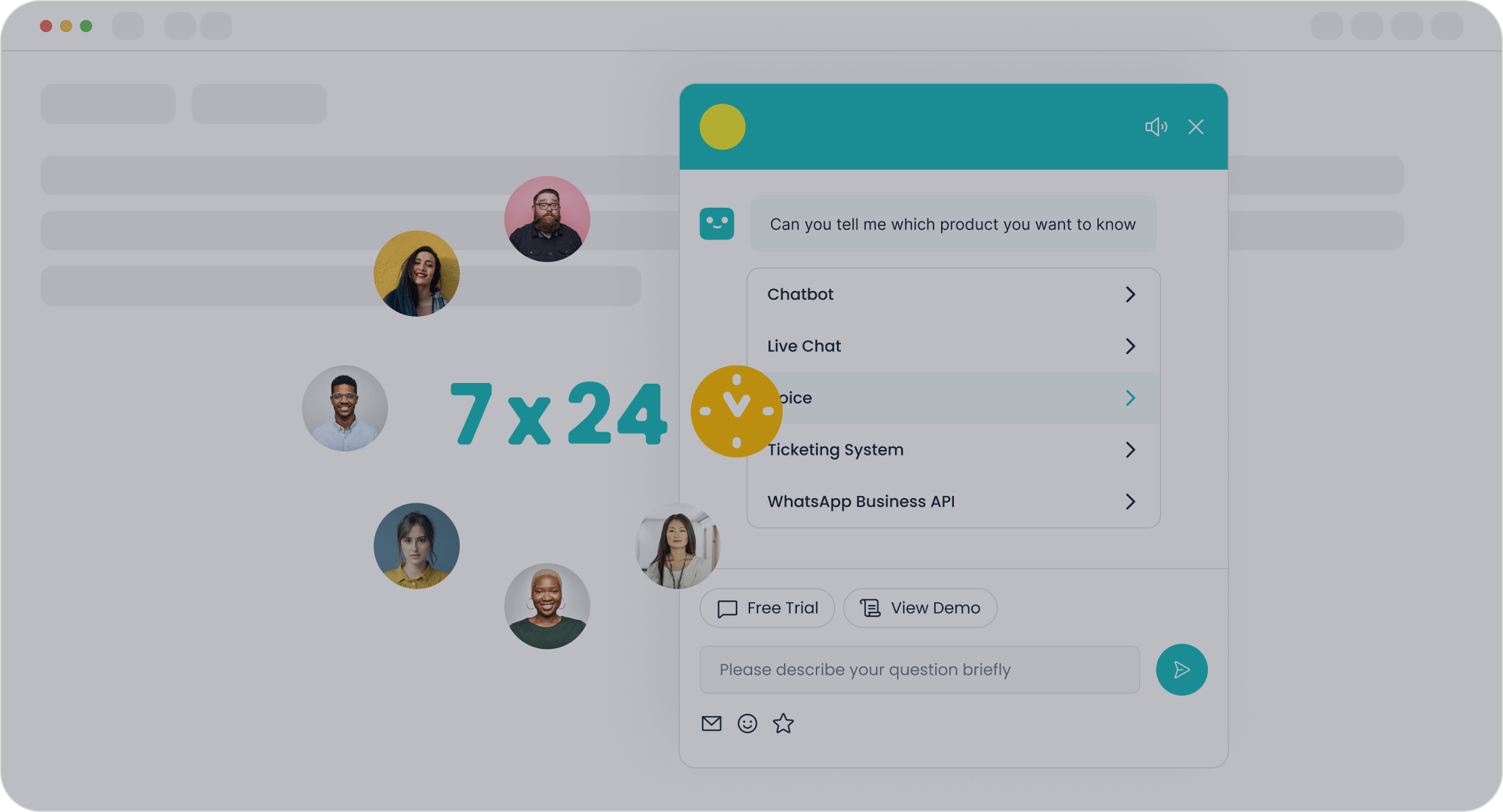
Imagine resolving customer issues without long wait times or unnecessary complications. Self-service platforms make this possible by empowering you to deliver faster and more efficient solutions. Today, 81% of customers prefer solving problems independently, highlighting the growing demand for tools like AI-driven virtual assistants. These platforms reduce operational costs by minimizing ticket volumes and freeing up your support teams for complex tasks. With 24/7 availability, self-service resources enhance response times and improve customer satisfaction. Brands like Sobot take this a step further, offering advanced solutions that redefine the self-service experience for modern businesses.
Understanding Self-Service Platforms
Definition and Core Features
Self-service platforms are tools that empower users to independently complete tasks without relying on external support. These platforms are designed to streamline processes, reduce operational bottlenecks, and provide users with immediate access to the resources they need. Whether you're a customer seeking answers or a developer managing workflows, self-service platforms offer unmatched convenience.

Key features of these platforms include ad hoc query capabilities, data visualization tools, and customizable dashboards. For example, Sobot’s AI-powered chatbot provides 24/7 multilingual support, enabling businesses to automate customer interactions and reduce service costs by up to 50%. Other features like predictive modeling and data sharing enhance decision-making and collaboration. These tools not only improve efficiency but also contribute to the democratization of data, ensuring that insights are accessible to everyone in your organization.
| Core Features | Description |
|---|---|
| Ad hoc query | Enables users to create queries without technical expertise. |
| Data visualization | Simplifies complex data through visual representation. |
| Dashboard design | Allows users to monitor key metrics in real-time. |
| Predictive modeling | Provides tools for forecasting and scenario analysis. |
| Security and governance | Ensures data protection and controlled user access. |
Types of Self-Service Platforms
Self-service platforms come in various forms, each tailored to specific needs. Some of the most common types include:
- Customer portals: These allow users to track orders, manage accounts, and resolve issues independently.
- Knowledge bases: These provide a repository of articles, FAQs, and guides to help users find answers quickly.
- Chatbots: AI-driven tools like Sobot’s chatbot handle repetitive queries, freeing up human agents for complex tasks.
In addition, developer self-service platforms are gaining traction. These tools enable developers to access resources, manage APIs, and deploy applications without delays. By offering self-service options, businesses can enhance productivity and reduce dependency on support teams.
Applications in Customer Service and Ecommerce

Self-service platforms have revolutionized customer service and ecommerce. In customer service, tools like chatbots and knowledge bases ensure faster issue resolution. For instance, Sobot’s chatbot achieves a resolution rate of 83%, as demonstrated by OPPO’s success story. This not only improves customer satisfaction but also reduces operational costs.
In ecommerce, self-service analytics play a pivotal role. They allow businesses to track customer behavior, optimize marketing strategies, and reduce cart abandonment rates. Studies show that buyers prefer accessing pricing and product demos independently. If these require contacting a sales rep, buyers are 40% less likely to make a purchase. By integrating self-service development tools, businesses can deliver insights faster and enhance the overall shopping experience.
| Industry Sector | Key Benefits of Self-Service Platforms | Market Size (2024) | Projected Growth Rate (CAGR 2025-2030) |
|---|---|---|---|
| Manufacturing | Improves service efficiency, boosts customer engagement, allows order management independently | USD 18.07 billion | 21.6% |
| Retail | Empowers customers to manage shopping experiences, enhances convenience and satisfaction | ||
| Healthcare | Provides 24/7 access to support, allows for independent issue resolution | ||
| IT & Telecom | Increases operational efficiency, supports customer queries instantly |
By adopting self-service platforms, you can transform your operations, improve customer satisfaction, and gain a competitive edge in your industry.
Efficiency Benefits of Self-Service Platforms

Streamlining Operations with Automation
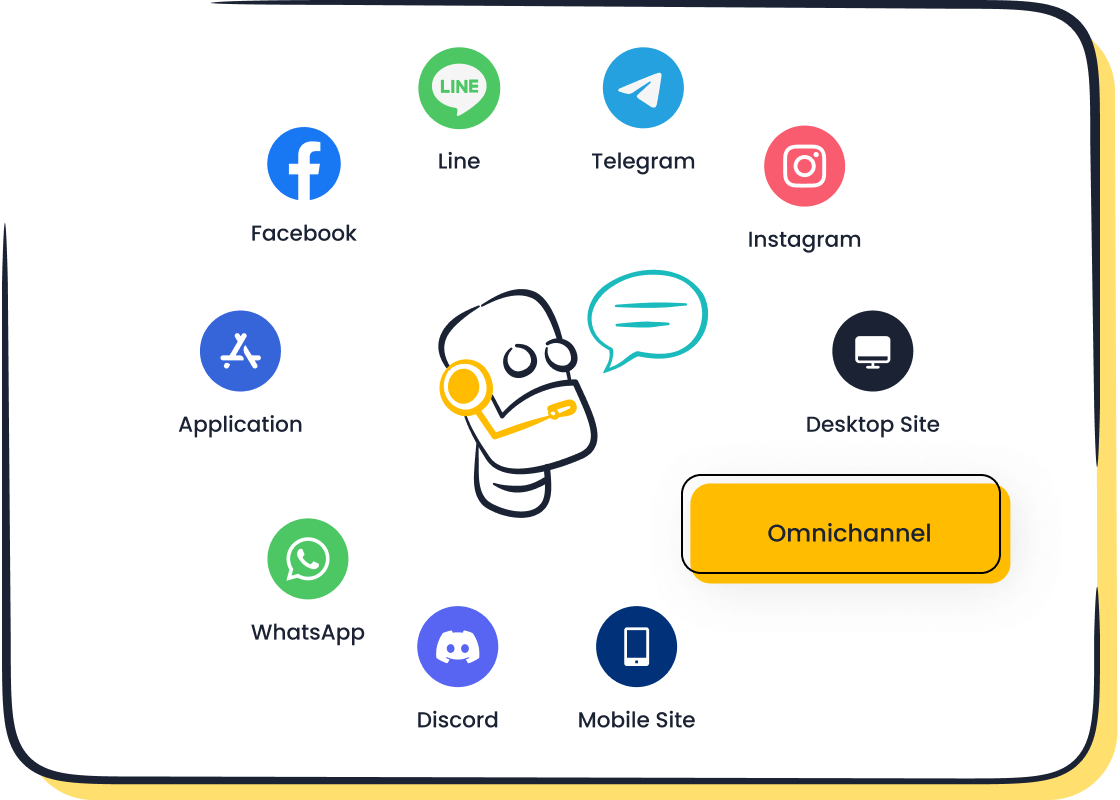
Automation is the backbone of self-serve platforms, enabling you to streamline operations and achieve unparalleled efficiency. By automating repetitive tasks, these platforms free up valuable time for your team to focus on strategic goals. For instance, Sobot’s AI-powered chatbot operates 24/7, handling routine queries and reducing the need for human intervention. This not only accelerates response times but also ensures consistent service quality.
The impact of automation is undeniable. Studies reveal that 90% of executives expect automation to enhance workforce capacity, while 73% of IT leaders report time savings of 10-50%. Additionally, 85% of business leaders believe automation allows teams to focus on high-priority tasks. These benefits translate into tangible outcomes, such as a 12% increase in workforce capacity and a 24% reduction in operational costs.
| Statistic | Value |
|---|---|
| 90% of executives expect automation to improve workforce capacity | 90% |
| 73% of IT leaders attribute 10-50% time savings to automation | 73% |
| 85% believe automation allows focus on strategic goals | 85% |
| Organizations report a 12% increase in workforce capacity after automation | 12% |
| Reported cost reduction of 24% from automation | 24% |
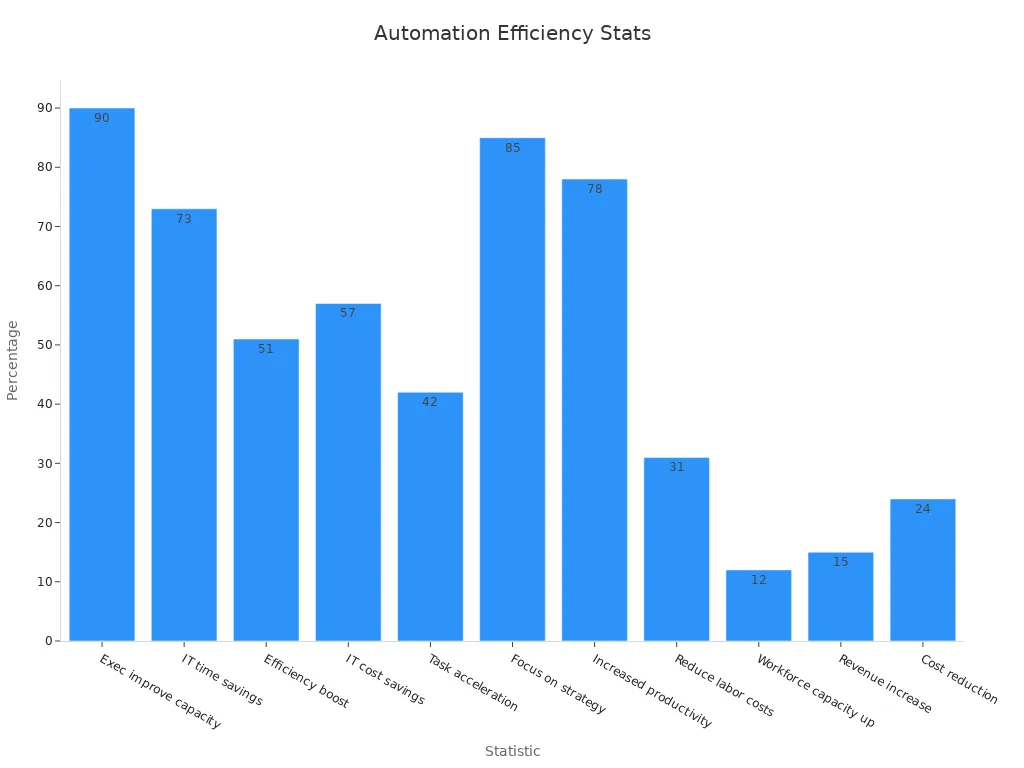
By integrating automation into your self-service tools, you can optimize workflows, reduce delays, and improve operational efficiency. Whether you’re managing customer self-service or developer self-service, automation ensures seamless execution across all touchpoints.
Reducing Manual Tasks and Human Error
Manual processes often lead to inefficiencies and errors, which can negatively impact your business. Self-serve platforms eliminate these challenges by automating routine tasks and providing accurate, real-time solutions. For example, Sobot’s chatbot uses AI to deliver precise answers, achieving an 83% resolution rate for customer queries. This reduces the burden on your support team and minimizes the risk of human error.
The data speaks for itself. Businesses that adopt self-service support see a 20% reduction in inbound discussion volume and a 96% increase in positive feedback. AI-driven platforms also ensure that over 80% of answers are correct, boosting customer satisfaction to 95% or higher. These improvements not only enhance service quality but also build trust with your audience.
| Evidence Description | Result |
|---|---|
| Reduced inbound discussion volume | 20% |
| Increased positive feedback | 96%+ |
| Correct answers provided by AI | 80%+ |
| Customer satisfaction score | 95%+ |
| Problems solved with solutions | 85% |
| Customer happiness rate | 99% |
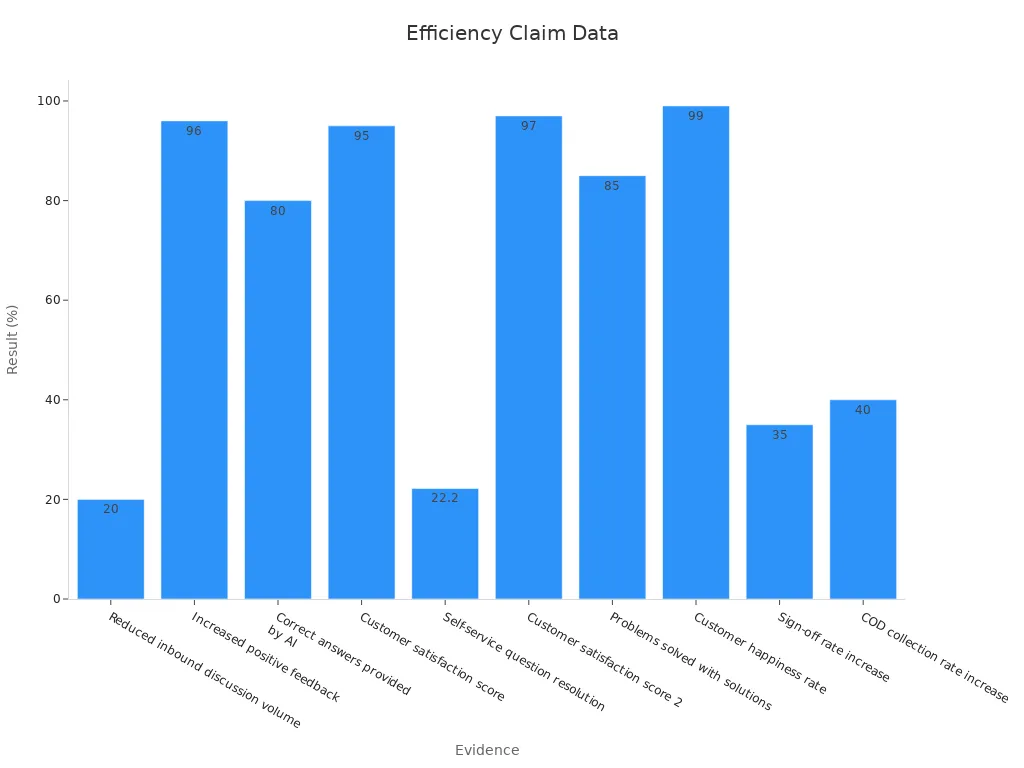
By reducing manual tasks, you can allocate resources more effectively and focus on delivering exceptional customer experiences. Self-service development tools also empower your team to innovate without being bogged down by repetitive processes.
Enhancing Productivity for Employees and Customers
Self-service platforms are a win-win for both your employees and customers. For employees, these tools reduce workload by automating mundane tasks, allowing them to concentrate on complex issues. For customers, self-service tools provide instant access to information, eliminating the need to wait for support. Sobot’s chatbot, for instance, improves productivity by 70% while boosting customer satisfaction rates.
Data analytics play a crucial role in enhancing productivity. By leveraging insights from self-service platforms, you can identify bottlenecks, optimize workflows, and improve decision-making. This not only increases efficiency but also drives better outcomes for your business. In fact, 78% of business leaders agree that automation enhances productivity for all stakeholders.
When you invest in self-service platforms, you’re not just improving operational efficiency—you’re creating a more agile and responsive organization. Whether it’s customer self-service or self-service development, these tools empower everyone involved to achieve more in less time.
Cost Savings Through Self-Service Platforms

Lowering Operational Costs with Scalable Solutions
Self-serve platforms are game-changers when it comes to reducing operational expenses. By adopting scalable solutions, you can handle increasing customer demands without proportionally increasing costs. These platforms allow you to automate repetitive tasks, reducing the need for additional staff. For example, digital self-service interactions cost as little as $0.10 per interaction, compared to $6–12 for live agent calls. This significant cost difference highlights the financial advantage of self-service support.

Research shows that self-service technology can cut costs by up to 75%. It also leads to a 30% reduction in labor costs, freeing up resources for more strategic initiatives. Sobot’s AI-powered chatbot exemplifies this scalability. It operates 24/7, autonomously resolving routine queries and saving up to 50% on agent-related expenses. By integrating such tools, you can scale your operations efficiently while keeping costs under control.
| Benefit | Description |
|---|---|
| Cost Reduction | Shifting report generation to end-users reduces costs related to resource allocation and support. |
| Efficiency | Self-service analytics enhances efficiency by minimizing the need for custom report requests. |
| Resource Allocation | Frees up IT resources to focus on higher-value tasks, optimizing overall resource use. |
Minimizing Resource Wastage via Self-Directed Tools
Self-directed tools empower your team and customers to resolve issues independently, minimizing resource wastage. These tools enable autonomous decision-making, which reduces dependency on support staff and optimizes resource allocation. For instance, practices like self-directed teamwork and decision-making groups have proven effective in cutting waste and improving operational efficiency.
Implementing waste minimization strategies not only saves costs but also enhances your organization’s reputation. Sobot’s chatbot is a prime example of a self-service tool that reduces resource wastage. By automating routine inquiries, it allows your team to focus on complex tasks, ensuring resources are used effectively. This approach not only improves efficiency but also aligns with sustainable business practices.
Tip: Empowering employees with self-service options fosters a culture of independence and innovation, driving long-term success.
Optimizing Spending with Sobot’s Chatbot
Sobot’s AI-powered chatbot is a cost-effective solution for businesses looking to optimize spending. It reduces service costs by triaging queries 24/7, eliminating the need for additional agents during peak times. This tool also boosts productivity by 70%, allowing your team to focus on high-value tasks. By leveraging smart self-service features, Sobot’s chatbot increases conversion rates by 20%, directly impacting your bottom line.
The chatbot’s multilingual capabilities and omnichannel support ensure seamless customer interactions across platforms like WhatsApp and SMS. Its no-coding-required setup makes it accessible to businesses of all sizes. By adopting Sobot’s chatbot, you can achieve significant cost savings while enhancing customer satisfaction. This makes it an essential tool for modern businesses aiming to stay competitive.
Note: Investing in self-service tools like Sobot’s chatbot is not just a cost-saving measure—it’s a strategic move to future-proof your business.
Real-World Success Stories
OPPO’s Efficiency Gains with Sobot’s Chatbot
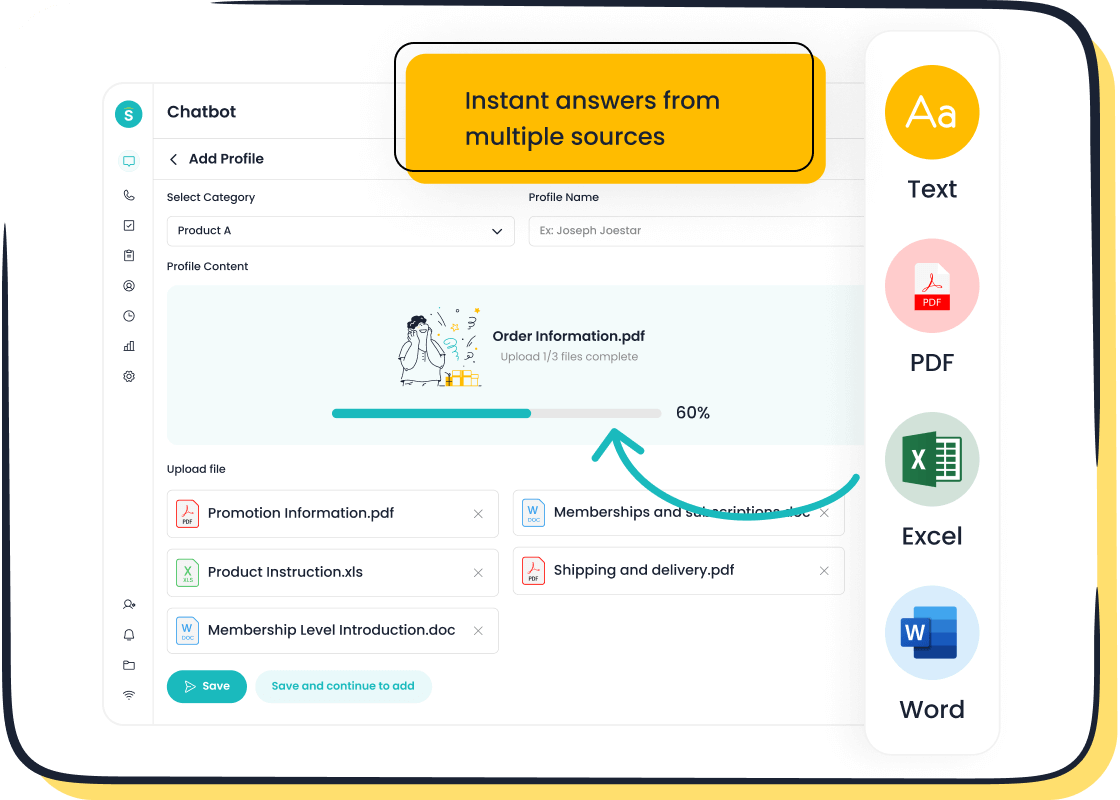
OPPO, a global leader in smart devices, transformed its customer service operations by adopting Sobot’s AI-powered chatbot. During peak shopping periods, OPPO faced a surge in customer inquiries, which overwhelmed its support teams. By integrating Sobot’s chatbot, OPPO automated responses to repetitive queries, allowing human agents to focus on complex issues. This human-machine collaboration significantly improved efficiency and customer satisfaction.
The results speak volumes. OPPO achieved an impressive 83% chatbot resolution rate, ensuring faster issue resolution for customers. Additionally, the company saw a 57% boost in repurchase rates, highlighting the chatbot’s ability to enhance customer loyalty. Sobot’s solution also optimized OPPO’s knowledge base, reducing maintenance efforts by 90%. These improvements not only streamlined operations but also positioned OPPO as a customer-centric brand.
| Metric | Value |
|---|---|
| Chatbot Resolution Rate | 83% |
| Boost in Repurchase Rates | 57% |
By leveraging Sobot’s chatbot, OPPO demonstrated how self-serve platforms can drive efficiency and cost savings while improving customer experiences.
Ecommerce Businesses Leveraging Self-Service Analytics
Ecommerce businesses thrive on data-driven decisions, and self-service analytics have become indispensable in this sector. These tools empower non-technical teams to create reports independently, eliminating the need for IT assistance. Faster access to insights enables informed decision-making, saving both time and money.
Self-service analytics offer several advantages:
- Non-technical teams can generate reports quickly, reducing delays.
- Businesses can analyze product popularity and customer drop-off points to optimize strategies.
- Enhanced marketing performance insights lead to better ROI.
For example, understanding customer behavior through data visualization tools allows ecommerce brands to reduce cart abandonment and improve conversions. Sobot’s AI solutions integrate seamlessly with self-service analytics, enabling businesses to track key metrics and make smarter decisions. By adopting these tools, you can turn data into a competitive advantage and drive better business outcomes.
Call Centers Enhancing Customer Satisfaction with Self-Serve Platforms
Call centers are embracing self-serve platforms to improve customer satisfaction and operational efficiency. These tools allow customers to resolve issues independently, reducing wait times and enhancing overall experiences. Sobot’s chatbot plays a pivotal role in this transformation, offering 24/7 support and multilingual capabilities.
Recent surveys highlight the impact of self-service support in call centers:
- Resolved inquiries achieve an 89% customer satisfaction (CSAT) score.
- Net Promoter Score (NPS) for resolved issues reaches 14, while unresolved issues drop to -25.
- CSAT falls to 50% when inquiries remain unresolved.
| Metric | Resolved Inquiries | Unresolved Inquiries |
|---|---|---|
| Customer Satisfaction (CSAT) | 89% | 50% |
| Net Promoter Score (NPS) | 14 | -25 |
Sobot’s self-serve platforms empower call centers to deliver faster resolutions and build stronger customer relationships. By investing in these tools, you can elevate satisfaction rates and position your business as a leader in customer service.
Tips for Implementing Self-Service Platforms
Assessing Business Needs and Choosing the Right Platform
Choosing the right self-service platform starts with understanding your business needs. Begin by identifying the challenges you aim to solve, whether it’s reducing ticket volumes, improving customer satisfaction, or optimizing workflows. Metrics like user adoption rates, transaction volumes, and time-to-resolution can help you evaluate your current processes and pinpoint areas for improvement. For example, a global financial services organization reduced routine service desk tickets by 62% and improved user satisfaction by 40% after implementing a self-service IT platform.
Consider ROI when assessing platforms. A pharmaceutical company reported a three-year ROI of 415% after adopting self-service tools, showcasing their potential for cost savings and productivity gains. By analyzing these metrics and case studies, you can make informed decisions and select a platform that aligns with your goals.
Designing User-Friendly Interfaces
A user-friendly interface is essential for successful self-service platform adoption. Simplicity and consistency in design ensure users can navigate the platform effortlessly. For instance, clear communication between the interface and the user enhances satisfaction, while usability testing identifies areas for improvement. Below are key design principles supported by industry research:
| Design Principle | Description |
|---|---|
| Simplicity | A simple design helps users focus on their tasks without distractions from complex layouts. |
| Consistency | Consistent elements in design enhance user understanding and navigation across the interface. |
| Usability Testing | Testing how users interact with the interface helps identify areas for improvement. |
| Effective Communication | Clear communication between the user and the interface is crucial for user satisfaction. |
| Typography | Attention to typography can significantly impact usability and user experience. |
By prioritizing these principles, you can create interfaces that encourage self-service development and improve user engagement.
Training Teams and Monitoring Performance Metrics
Training your team is critical for maximizing the benefits of self-service platforms. Equip employees with the knowledge and skills needed to use the platform effectively. Evaluate training outcomes using methods like surveys, discussions, and assessments. The Kirkpatrick model is a robust framework for measuring training effectiveness across four levels: Reaction, Learning, Behavior, and Impact.
Monitoring performance metrics ensures your platform delivers optimal results. Key performance indicators (KPIs) include productivity, quality, and resolution times. For example, tracking help desk metrics can reveal areas for improvement and guide data-driven decisions. Regular monitoring also ensures your team meets service-level agreements (SLAs) and delivers exceptional customer experiences.
Tip: Combine training with performance monitoring to continuously refine your self-service options and achieve long-term success.
Self-service platforms revolutionize how you operate, delivering efficiency, cost savings, and unmatched customer satisfaction. By adopting tools like Sobot’s Chatbot, you can automate repetitive tasks, reduce expenses, and focus on strategic goals. These platforms create a measurable business impact, helping you stay competitive in a fast-paced market. With features like 24/7 multilingual support and seamless integration, Sobot empowers you to enhance customer experiences and drive growth. Now is the time to embrace self-service solutions and position your business for long-term success.
Take Action: Explore Sobot’s Chatbot today and transform your operations. Learn more.
FAQ
What are self-service platforms, and why should you use them?
Self-service platforms let users solve problems independently without waiting for support. They save time, reduce costs, and improve customer satisfaction. For example, Sobot’s AI-powered chatbot resolves 83% of queries autonomously, freeing your team to focus on complex tasks.
How do self-service platforms reduce operational costs?
These platforms automate repetitive tasks, cutting labor costs by up to 30%. Sobot’s chatbot operates 24/7, saving up to 50% on agent expenses. Digital interactions cost as little as $0.10 compared to $6–12 for live agent calls.
Can self-service tools improve customer satisfaction?
Yes! Self-service tools provide instant solutions, reducing wait times and boosting satisfaction. Sobot’s chatbot achieves a 94% positive feedback rate, as seen with OPPO. Customers appreciate quick, accurate responses, which build trust and loyalty.
Are self-service platforms suitable for small businesses?
Absolutely. Sobot’s no-coding-required chatbot is accessible to businesses of all sizes. It’s scalable, cost-effective, and easy to implement. Small businesses can automate support, reduce costs, and enhance customer experiences without needing extensive resources.
How do I choose the right self-service platform for my business?
Start by identifying your needs, such as reducing ticket volumes or improving response times. Evaluate features like automation, multilingual support, and scalability. Sobot’s chatbot offers all these benefits, making it a versatile choice for businesses across industries.
Tip: Explore Sobot’s AI-powered solutions to transform your operations and achieve measurable results. Learn more.
See Also
Enhancing Efficiency With AI-Driven Customer Service Solutions
Understanding The Efficiency Of Call Center Automation
Enhance SaaS Customer Support Using Live Chat Techniques
